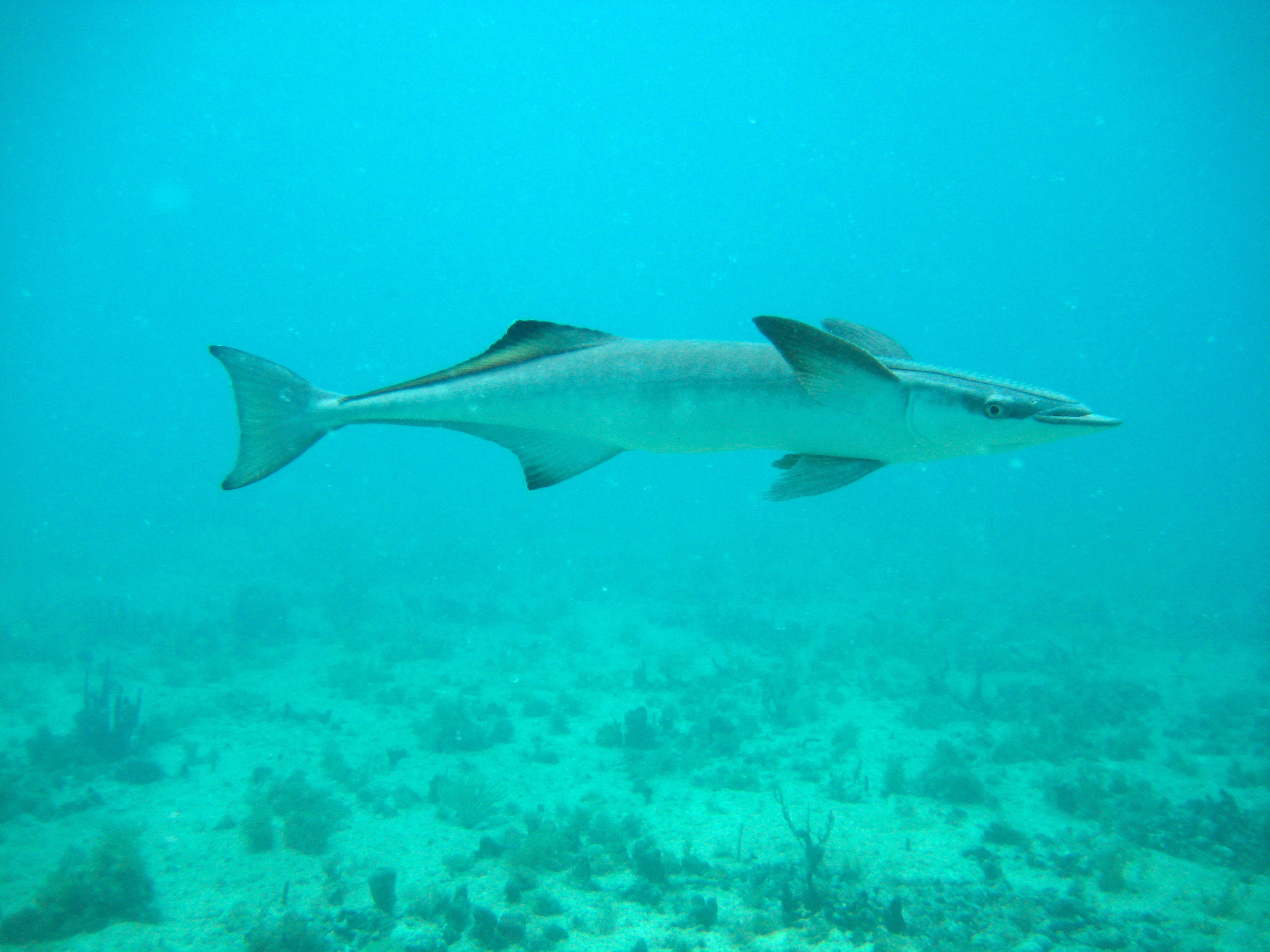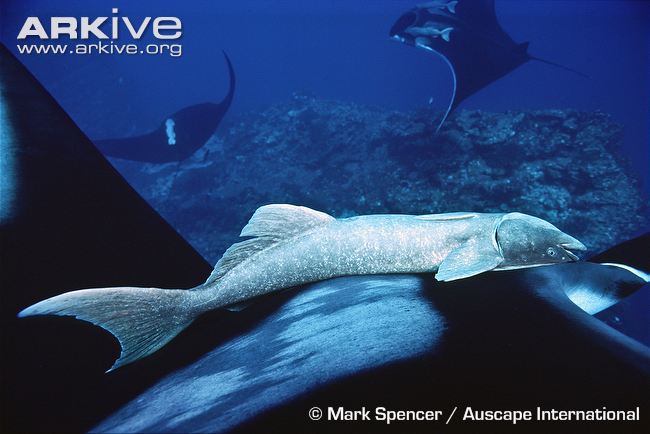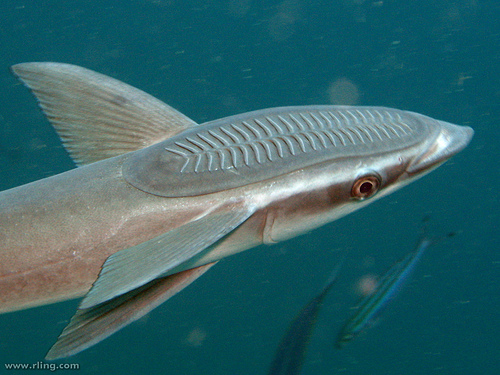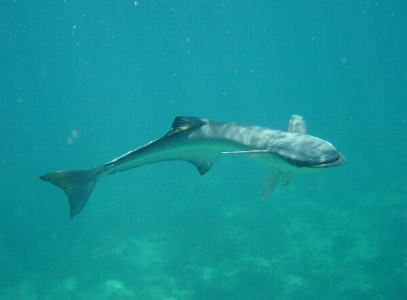
Remora remora
FAMILY
Echeneidae
TAXONOMY
Remora remora Linnaeus, 1758, Indian Ocean.
OTHER COMMON NAMES
Japanese: Nagakoban.
PHYSICAL CHARACTERISTICS
Body is elongate, robust, and clublike, with a large, flat head
and a large sucker disc. Dorsal and anal fins are positioned just
forward of the caudal peduncle. There are 22–26 soft rays in
the dorsal fin and 22–24 soft rays in the anal fin. The caudal
fin is large and somewhat truncated. The coloring is a dark,
brownish gray. Reaches nearly 35 in (90 cm) in length and just
over 2.2 lb (1 kg) in weight.
DISTRIBUTION
Circumglobal in tropical, subtropical, and warm temperate waters
of the Pacific, Atlantic, and Indian Oceans. Also found in
the Mediterranean. Reported from Iceland and Scandinavia,
presumably during warmer months.
HABITAT
Attaches to host organisms, such as sharks, rays, seaturtles, billfishes,
other large fishes, and even ships. Pelagic but also appears
inshore.
BEHAVIOR
Attaches itself to host organisms and hitches rides. Swims
freely, on occasion. Otherwise,
BEHAVIOR
is not well known.
FEEDING ECOLOGY AND DIET
Feeds on parasitic copepods attached to host organisms. Also
takes leftover scraps from the host’s feeding events.
REPRODUCTIVE BIOLOGY
Not well known. Likely pair-spawns pelagic eggs and has pelagic
larvae. Spawning may be seasonal, especially at higher latitudes.
CONSERVATION STATUS
Not listed by IUCN.
SIGNIFICANCE TO HUMANS
May be taken incidentally for public aquaria or as bycatch from
shark fisheries.
Photo Gallery of - Common remora





 Animalia Life
Animalia Life